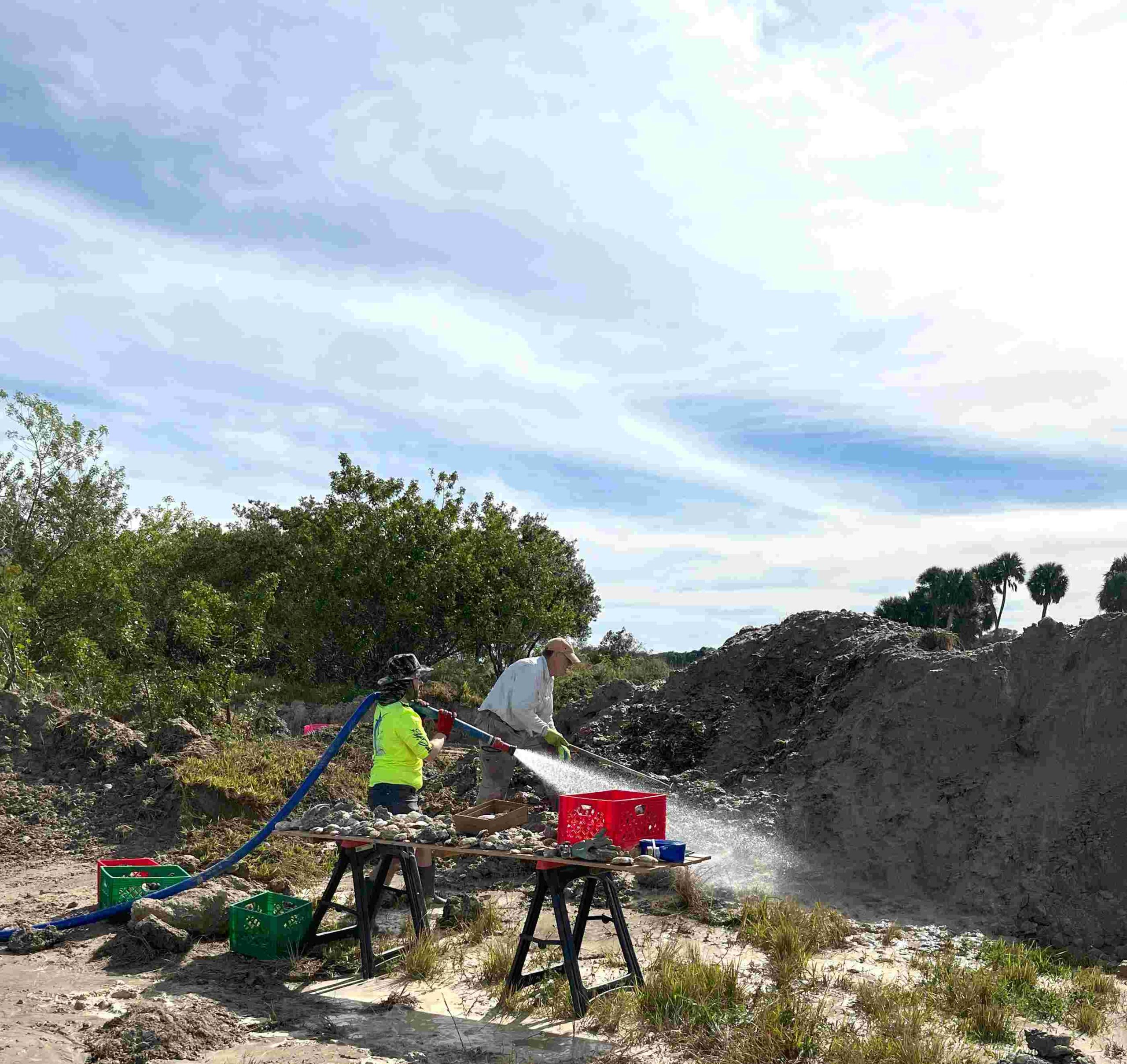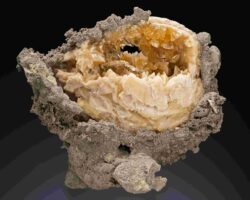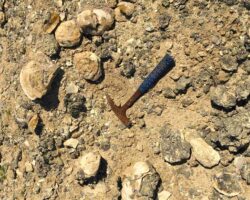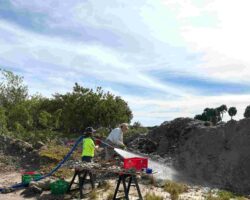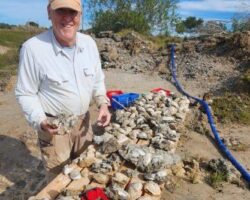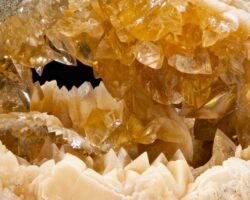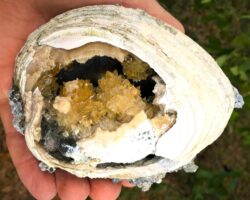Pacific GeoLab’s
Rucks Pit Crystal Clam Festival
Okeechobee Florida April 2025
at the REAL Rucks Pit!
Incredible! is the most common term used when people see this unusual combination of crystals and fossils. Now you have a chance to dig your own – at the REAL Rucks Pit. To be clear – the nearby “Ft Drum Crystal Mine” is NOT Rucks Pit! Pacific GeoLab has exclusive rights to the old quarry which is the real Rucks Pit where these spectacular fossils are found. Up until now we have never allowed other people to dig these specimens. But NOW is your chance! We will be hosting an exclusive dig event at Rucks Pit on April 10 -13, 2025. This may be your only chance to dig these unique specimens for yourself. Only a few dozen people will be allowed, and only for a few days.
Keep whatever you find. Your satisfaction is guaranteed.
The cost will be $475 per person, per day. There is no payment due at this time. But if you are seriously interested, please fill out the form below to get more info when we open the registration. We will contact you later when the event is confirmed with full details. Payment will be due at that time.
our exclusive
MAKE-YOU-SMILE GUARANTEE
You WILL find crystal clams!
But, if you are not perfectly happy with what you find,
you will be allowed to pick $400 worth of beautiful,
fully prepared crystal clams to take home with you.
The digging is not very difficult. Any able-bodied person can do it. It mostly involves using hand tools to dig through the layers of loose material. As you find specimens you rinse them off with water hoses we provide. Also mixed into the unconsolidated sediments are pieces of hardened matrix that have multiple clams as well. These can be worked with chisels and mallets. It goes without saying that you can get pretty dirty!
